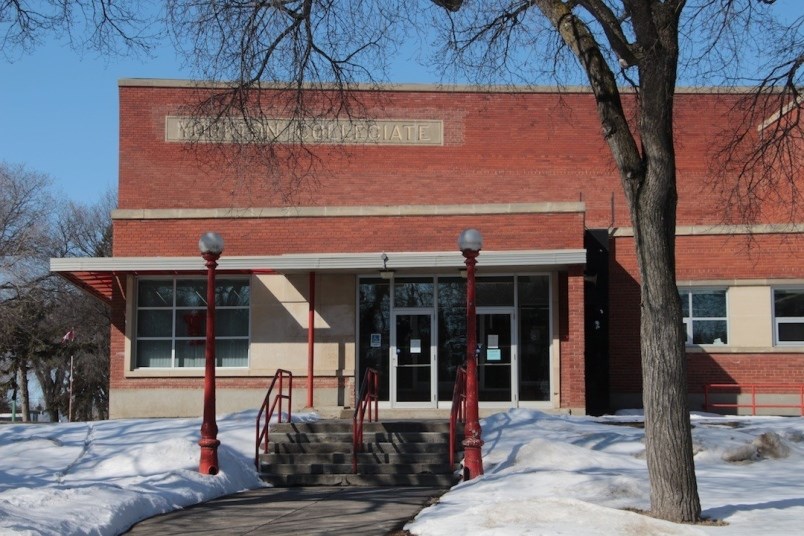On Saturday, Aug. 15, Premier Scott Moe announced in a video on Facebook that school would be starting on Sept. 8, half a week to a week later than schools had initially planned. On Monday, Aug. 17, he elaborated why.
In a press conference with Saskatchewan’s Chief Medical Health Officer, Dr. Saqib Shahab, Moe said that he sought to address concerns he’s heard over the past several weeks, noting that the usual excitement about a return to school is “mixed with some anxiety.”
“And I understand,” he said. “I that know most parents want to see their kids go back to school, but they also have concerns. And they have questions. They are looking for more clarity on how things are going to work and what things are going to look like. So today, I want to provide as much clarity as we can.”
The announcement came as the opposition New Democratic Party has been calling for more clarity from the Government on its COVID-19 back-to-school plan.
Moe said the provincial government would be providing “more resources, more information, more time and more testing capacity to ensure a safe return to school this fall.”
Moe said the province will allocate $40 million from the $200 million provincial COVID-19 contingency fund for additional costs related to ensuring the safety of students and staff through the pandemic. This is in addition to $40 million in savings schools realized from not operating in the springtime.
The $40 million in contingency funding will see half made available to school divisions on an application basis for pandemic-related costs including staffing and sanitation supplies. Another $10 million will be available to enhance non-classroom options like distance learning to help ensure immunocompromised and medically fragile students have continuous access to learning across school divisions, available on an application basis. The last $10 million will be allocated to the Ministry of Education to centrally procure masks, PPE and other supplies for school divisions.
Moe noted that COVID-19 testing in Saskatchewan has ramped up from 1,000 to 1,500, then 2000 tests per day. It is now approaching 3,000 and by early September will reach 4,000 tests per day. He explained that testing, including voluntary, randomized testing, will be available for students and staff.
Moe noted all teachers and school staff are being encouraged to seek testing prior to returning to school and at frequent points throughout the school year. Priority access to testing will be established for teachers and school staff in the coming days, with referrals available through 811.
Targeted school testing is a key focus of the expanded testing plans, with plans including targeted monitoring, testing of students with parental consent, and priority testing for teachers and school staff. Participating schools will be selected based on a number of factors, such as number of students in the school and if the community is experiencing a recent surge of new cases. In school public health visits for routine childhood vaccinations will now include COVID-19 testing, where parental consent is granted, Moe noted.
School divisions are to release their school-specific operation plans online no later than August 26, to allow parents to decide what they will be doing. This may mean some parents refraining sending their kids to school, choosing distance learning instead. Moe said individual schools will be somewhat different. These include things like bussing protocols and which entrances students will use.
As for the extra days before school starts, Moe said, “It will provide teachers and other staff two to four day to be in the school, to be trained on protocols, make sure their classrooms are configured properly, and in some cases, hold virtual meetings with parents to discuss exactly what the new procedures are.”
The terms and conditions of the collective bargaining agreement currently held with the Saskatchewan Teachers Federation will be honoured, the Government noted in a release. Instructional hours will not be extended, meaning depending on the school division, there will be two to four fewer instructional days this school year.
School divisions have been working within the provincial guidelines and public health guidance provided through the Safe Schools Plan to implement initiatives like block scheduling, cohorting, and considerations for alternating school days. Under the new funding made available to divisions, additional staff to reduce class sizes in exceptional circumstances will be considered.
Moe said school divisions are encouraged “to use all the capital assets they have, to the greatest ability they can, to reduce class size.”
He noted that if one school has larger class sizes, but another school a mile away has additional capacity, it should be used. He didn’t specifically say students would be reassigned to different schools, however.
Shahab noted that occasional clusters in school or a family of a student, but “it should not always be a cause of concern,” he said, adding it should not cause panic.
With enhanced testing, there will be cases of students who are asymptomatic or have mild symptoms, he noted.
If a student is sick, they should stay home. He pointed out, with cough and cold season coming, that 99 times out of 100, testing does not turn out to be COVID. If they test negative, they can come back when better.
Moe noted how there have been concerns at each stage of Saskatchewan’s reopening, be it retail, or health services, or athletics, but they have all be done successfully.
School divisions are currently preparing plans for submission to the Ministry of Education this week for considerations of altering operations of high density schools, primarily in collegiate settings, under Level 3 of the Safe Schools Plan.
Shahab said, “It’s really important for children to be in schools, both for their education and for their social development and mental health.”
He will be sending his own son to school. “I have one child starting school in high school,” he said. “My son will go to school, whether Level 2 or Level 3.”




